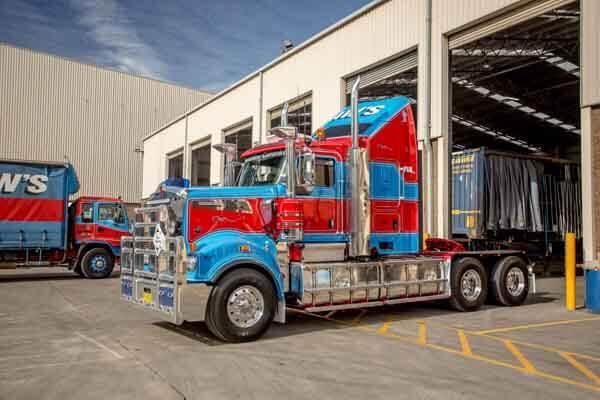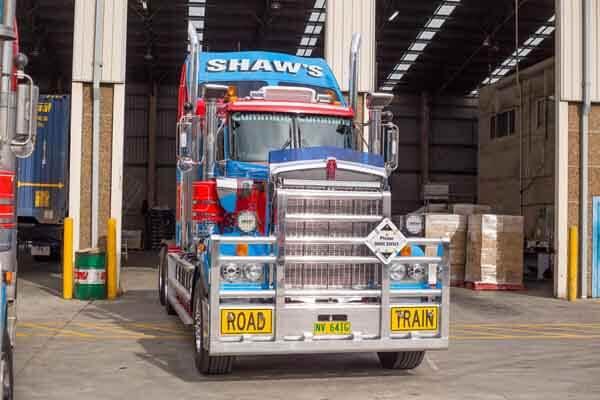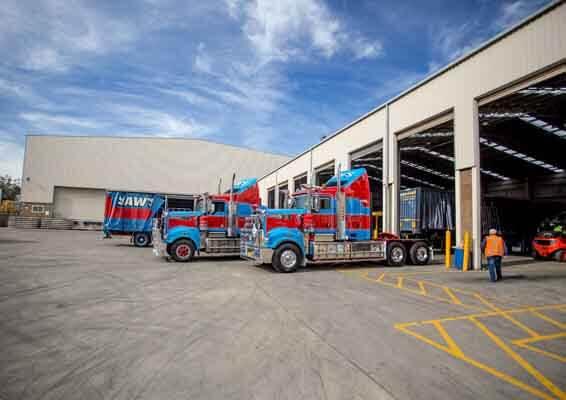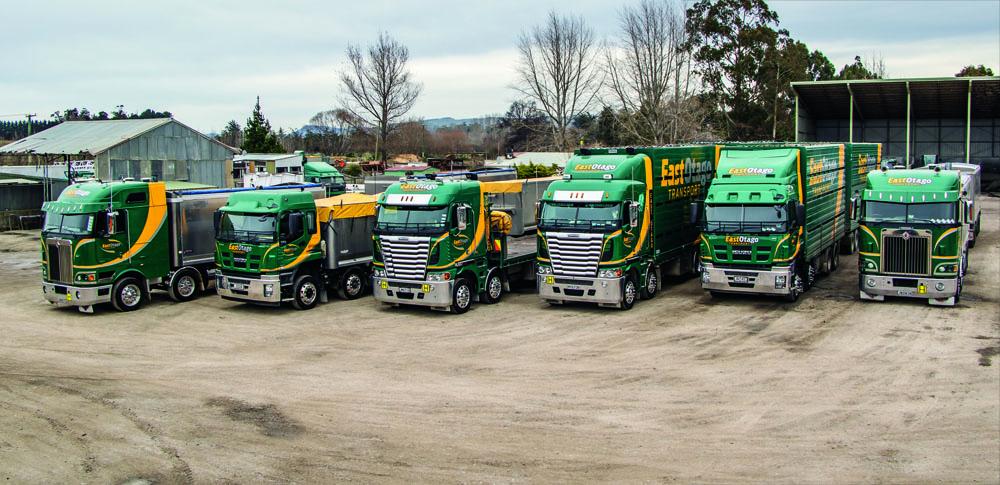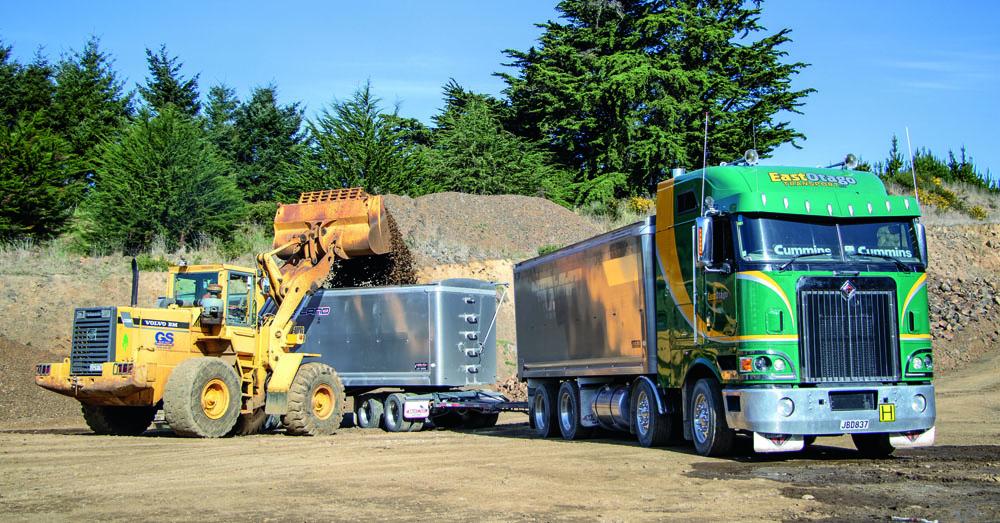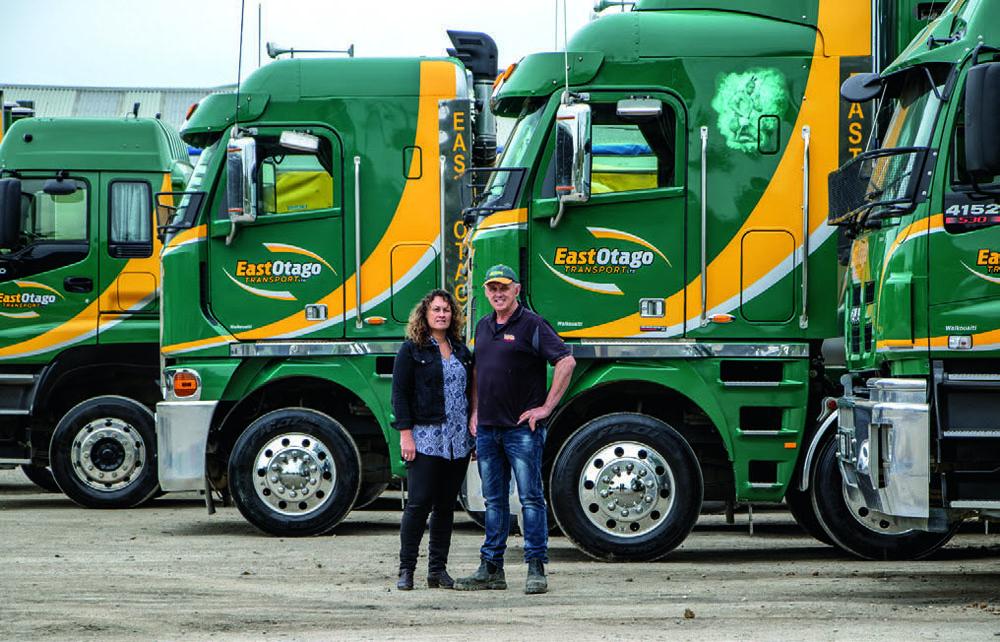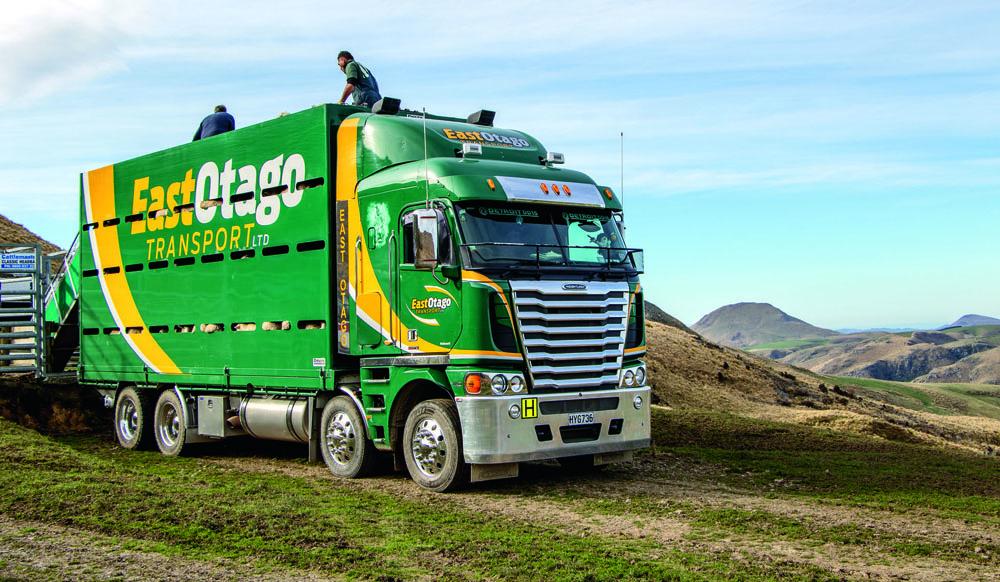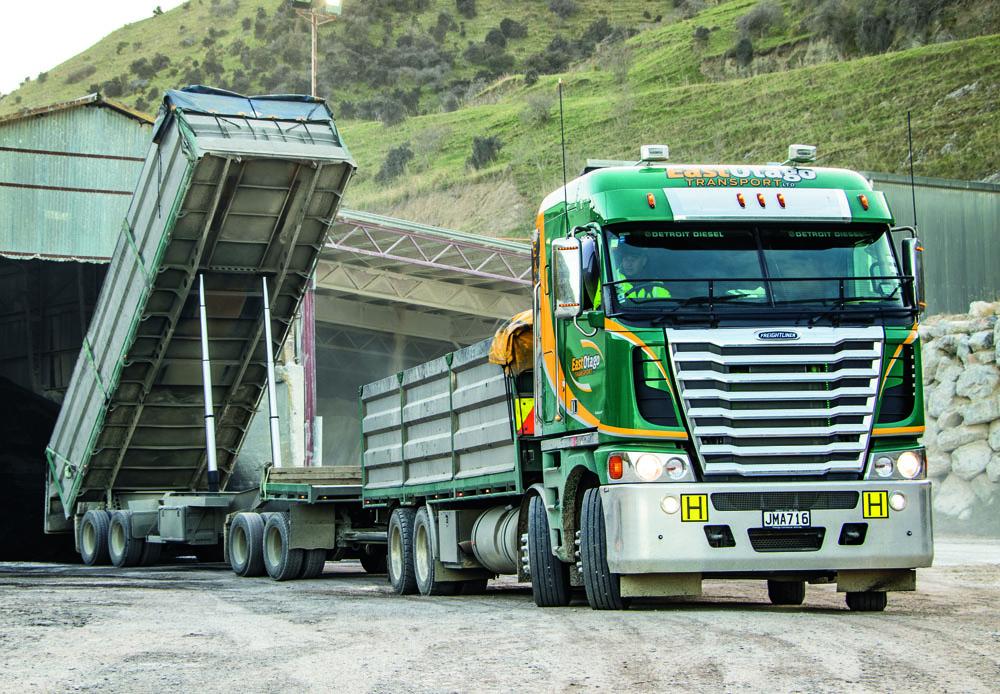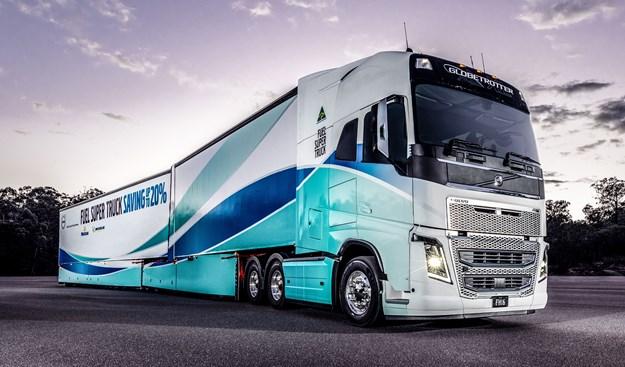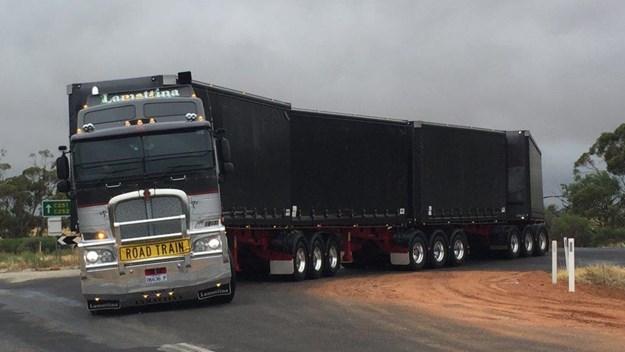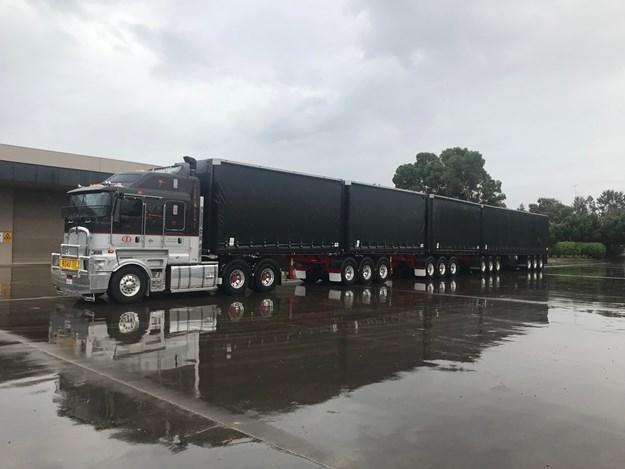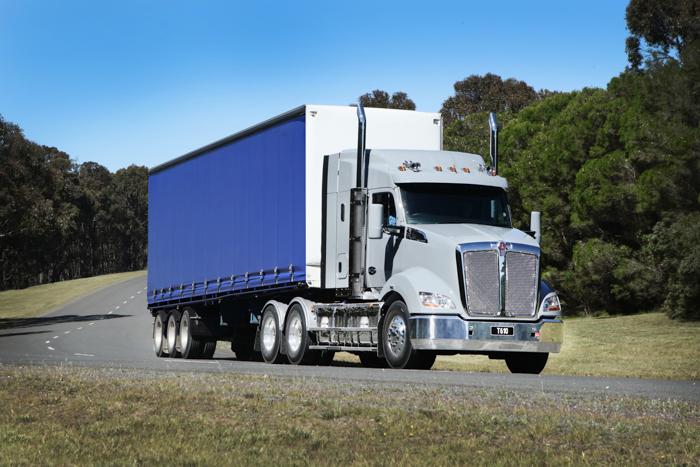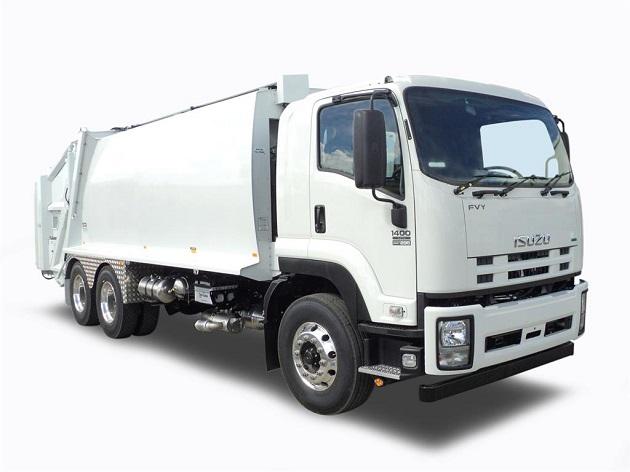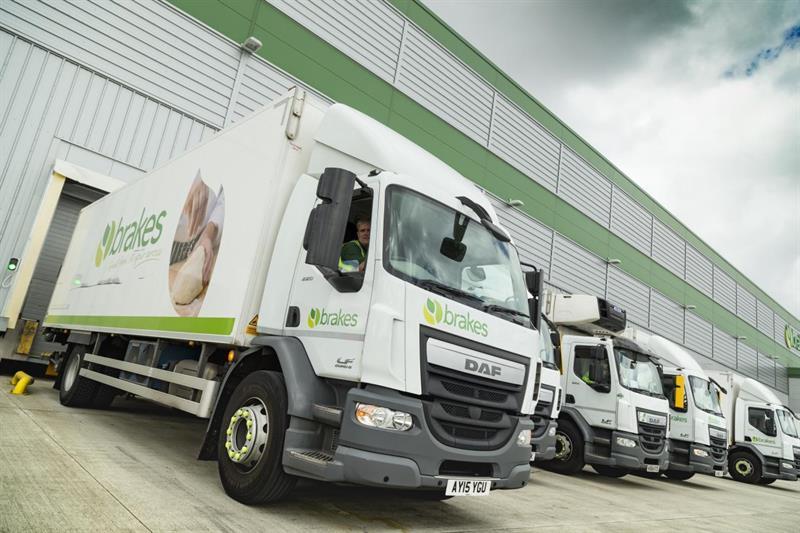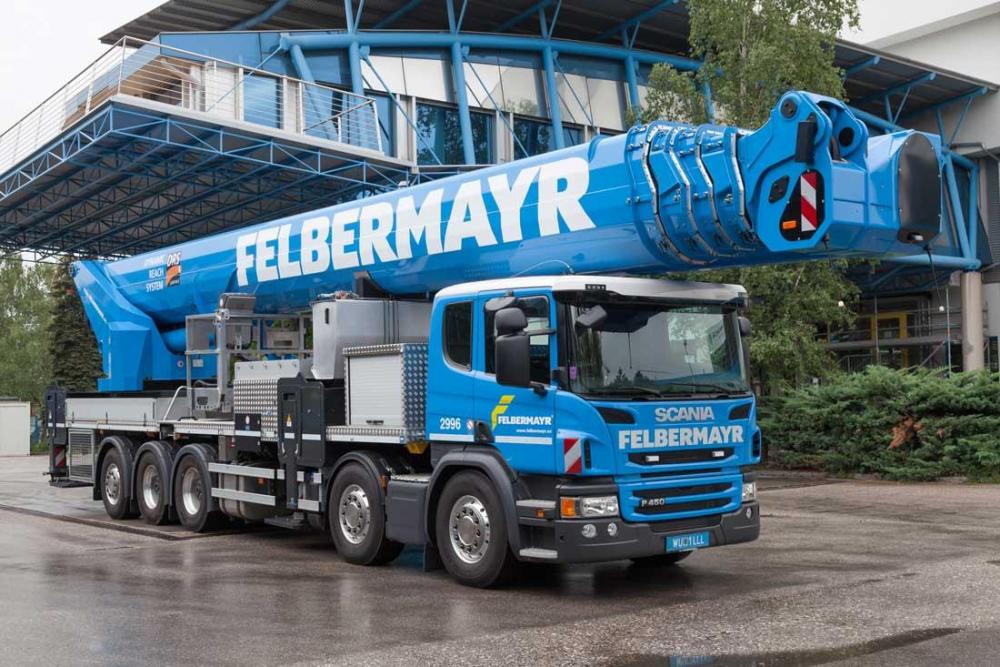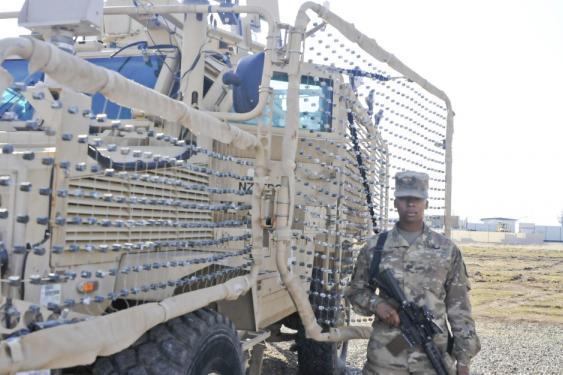
kscarbel2
Moderator-
Posts
18,935 -
Joined
-
Days Won
114
Content Type
Profiles
Forums
Gallery
Events
Blogs
BMT Wiki
Collections
Store
Everything posted by kscarbel2
-
I believe you'll find that you have a Stemco 343-4025.
-
GM squeezes pounds and pennies to attack Ford's pickup profit machine Joseph White, Reuters / August 9, 2018 Engineers for GM pickups took the Ford factory tour to scout F-150 production FORT WAYNE, Indiana -- When General Motors engineers were developing the 2019 Chevrolet Silverado and GMC Sierra pickup trucks, some of them joined public tours of Ford Motor Co.’s Dearborn, Mich., factory to watch aluminum-bodied F-series trucks go down the assembly line. The redesign of the Ford F-series trucks, launched in 2014, set a new standard for fuel economy and lightweight vehicle construction. But armed with stopwatches and trained eyes, the GM engineers believed they saw problems. “They had a real hard time getting those doors to fit,” Tim Herrick, the executive chief engineer for GM truck programs told Reuters. His team did more intelligence gathering. They bought and tore apart Ford F-series doors sold as repair parts. Their conclusion: GM could cut weight in its trucks for a lower cost using doors made of a combination of aluminum and high strength steel that could be thinner than standard steel, shaving off kilograms in the process. These pounds and penny-based decisions will have major implications in the highest stakes game going in Detroit: dominance in the world’s most profitable vehicle market, the gasoline-fueled large pickup segment. What’s more, GM is banking on strong sales of overhauled 2019 Silverados and GMC Sierras to fund its push into automated, electric vehicles -- a business many investors see as the auto industry’s long term future. The risks are high given the hits automakers have taken from U.S. President Donald Trump’s trade policies. Rising aluminum prices spurred by Trump’s tariffs are driving up costs on the Ford’s F-series, while rising steel and aluminum prices drag on GM results. GM also has a significant risk should the United States, Mexico and Canada fail to agree on a new NAFTA trade deal, given GM trucks built at its Silao, Mexico, factory could face a 25 percent tariff if NAFTA collapses. Interviews with GM executives and a tour at its factory here in northwest Indiana provide a detailed look inside GM’s plan for the most important vehicles in its global lineup. These big pickups are everything Tesla Inc.’s Model 3 or a Chevy Bolt electric car is not. The mostly steel body is bolted to the truck’s steel frame, rather than the one-piece body and frame electric vehicles. The majority of trucks will have a V-8 gasoline engine in front powering the rear wheels -- like the classic GM cars of the 1950s. Some Silverados will have new four-cylinder engines, but there is no electric or hybrid offering as of now. The new Silverado -- GM’s top-selling vehicle in the United States -- is a technology achievement of a different kind. It is taller and has a longer wheelbase than its beefy predecessor, which can help it more easily meet federal fuel efficiency rules. But it is 450 pounds lighter, and its V-8 engine achieves 23 mpg on the highway, which rivals smaller SUVs and crossovers. Big price, big profits Wall Street investors give Tesla and its electric vehicles a higher value than GM’s shares. GM is betting that its core customers in the American heartland will keep paying premium prices -- 27 percent of GM trucks sell for more than $55,000 -- for these vehicles capable of hauling a trailer by day and substituting for a luxury sedan by night. Large pickups generate at least $17,000 a vehicle in pre-tax profit for GM, the company has indicated in disclosures to investors. GM executives told Reuters that with the new trucks, GM will have a big cost advantage they can use to chop at Ford’s leading market share. “We think we have thousands of dollars advantage (over Ford) just in the aluminum costs. It’s big,” said Herrick during a walk through the Fort Wayne plant, which began shipping the new Silverados and Sierras late last month. He said GM plans to use its Silverado cost advantage to put more safety or entertainment technology in the trucks, fund programs such as a promised fleet of electric cars and return money to shareholders. At Ford, truck marketing manager Todd Eckert said the company plans to stick to its game plan. For 41 years, the F-series trucks have been the best-selling single model line in the United States. For the first half of this year, the F-series line -- which ranges from the light-duty F-150 to medium duty commercial trucks -- has a 59,000 vehicle lead over the combined Chevrolet and GMC large pickups. “There’s always been competition in this segment and there always will be,” Eckert said. Ford’s purchasing director Hau Thai-Tang at an investor conference on Wednesday called the F-series pickup “one of our profit pillars,” and said Ford plans to increase the share of its 2018-2022 product development budget allocated to trucks and commercial vehicles to 29 percent from 24 percent in its prior 2015-2019 plan. Ford said it cuts costs by recycling about 20 millions pounds of aluminum scrap every month in its operations, enough to build about 37,000 F-series bodies. Light metal duel For decades, Ford and GM matched each other’s moves closely and built trucks that were similar in design, technology and capability. With the launch of GM’s new trucks, the rivals’ technology strategies have diverged. Ford in 2014 launched a new generation of F-series trucks with all-aluminum body structures for its big pickup trucks, and challenged rivals to find a better way match the fuel efficiency and towing power achieved using the lightweight metal and turbo-charged, six-cylinder engines. Rising pressure from the U.S. government to slash carbon dioxide emissions made Ford’s move look smart. The debate within GM over whether to follow Ford’s aluminum strategy “was a really hotly contested item for us,” said Herrick. He recalled skeptical questions when he sought approval from GM’s board for the billions of dollars required to launch the new Silverados at three factories. “Son, it really costs this much to build all those trucks?” the 58-year-old executive recalled being asked by a member of the board. Herrick, and Global Product Development chief Mark Reuss, said the shareholders’ billions would be better spent on what they call a “multi-material” strategy. The new Silverado and Sierra got close to the Ford truck’s weight using seven different grades of steel in the cab, aluminum hoods, door exterior panels and tailgates. Reuss pushed development of a novel carbon fiber plastic that will be molded to make load beds for certain high-priced GMC models -- and perhaps be used in different ways in future GM models, Reuss said. Before GM’s direction was clear, a supplier to Ford sent Reuss a box of the rivets his competitor was using to fasten the F-series aluminum body panels together, anticipating he’d be ordering them, too. “They’re still on my desk,” Reuss said in an interview. The combination of weight reduction and engine technology produces a rear-wheel drive 2019 Silverado with a 5.3-liter V-8 and an eight-speed automatic transmission that averages 17 mpg in the city and 23 on the highway, with a combined rating of 19 mpg. Different versions of the truck get different mileage ratings. A Ford F-150 with a 3.5-liter turbo six-cylinder and optional equipment that boosts the payload to about 3,230 pounds is rated at 17 mpg in the city, 21 on the highway and 19 combined, according to the government. An F-150 with a lighter payload rating of about 2,640 pounds is rated at 18 mpg city, and 25 mpg on the highway, according to the government. Chevrolet claims a payload of 2,190 pounds for a 2019 Silverado with a 5.3-liter engine and an eight-speed transmission. Four doors for profit In some crucial ways, GM is following Ford. GM previously could not keep pace with demand for crew cab pickups -- models with four, sedan-style doors in the cab. Ford used its lead in crew cab design to develop luxury truck models, such as the F-450 Limited, that have sticker prices as high as $100,000. Average selling prices in the segment are around $42,000 to $45,000 -- higher than the industry average. GM has now dedicated two factories to building light duty pickups, in Fort Wayne and Silao, Mexico, which have the flexibility to build “darn near 100 percent crew cabs if we wanted,” Herrick said. The GMC marketing division, meanwhile, is putting more emphasis on its Denali luxury truck brand, while Chevrolet will market more luxurious versions of the Silverado such as the frontier-themed High Country, which has leather seats and a Bose sound system. GM executives said they want to increase the company’s share of trucks sold at prices above $55,000 from the current 27 percent. John Bergstrom, who owns a multi-brand network of dealerships based in Neenah, Wis., said the new GM trucks should pull in buyers who currently don’t drive a pickup. “We didn’t have the technology we needed,” Bergstrom said. With the new truck, “we’ve got that. They almost magically figured out how to get fuel economy out of these things.”
-
Navistar contracted for rocket-propelled grenade netting
kscarbel2 replied to kscarbel2's topic in Trucking News
US$29.6 million......an order I'd happily accept. -
The D16 (rebadged as MP10) was only discontinued in North America. Volvo couldn't exist in the global market without a 15-16 litre engine, the Australian market being a case in point. https://www.bigmacktrucks.com/topic/48491-volvo-cancels-d16-mack-cancels-titan-tractor/?tab=comments#comment-359572
-
Power Torque Magazine / August 2018 Purchasing his first cab-over Kenworth in 1981, William Shaw set the foundation stone for a successful Darwin road express freight service, firstly as a subcontractor to a major national carrier, then as his own company. Now, some 37 years later, Shaw’s Darwin Transport has grown to boast a fleet of 47 Kenworth prime movers, 126 trailers, 60 dollies and 22 Isuzu rigid trucks, employing around 150 staff. William Shaw is still a shareholder in the business, choosing to reside in the UK these days with visits from time to time to view operations. A decision was made in 2011 to pass the company’s control over to a board of five directors, made up of ten years+, long-standing key managers, to take over operations. Shaw’s Darwin Transport head office and depot is in western Sydney, with additional depots in Darwin, Brisbane and Perth, with in-house workshop facilities in the Sydney, Darwin and Perth depots. Weekly, express and general services to Darwin are operated out of Sydney, Brisbane and Perth return, with additional return services east to west between Sydney to Perth. Shaw’s chooses not to run B-double or AB-triples, preferring to stick to their proven road train, double and triple combinations for their freight movements, utilising dog runners to get the multiple trailers to their respective assembly areas. With their Darwin depot situated on an 11-acre site comprising 7200 square metres of warehouse space, located at East Darwin, road train combinations can be run in as complete units. Operating under mass and maintenance management schemes, Shaw’s Darwin Transport runs triple road trains up to 110 tonnes GCM, to a maximum length of 53 metres in triple form, on the 3500-4000-kilometre (one way) routes covered. Express runs are completed by two drivers with freight arriving in Darwin in as little as 56 hours from despatch. It’s this highly efficient and time-sensitive service to local clients and the oil and gas industries that underscores the difference in operating parameters, based around the benefits of utilising Darwin as their support base. General freight makes up the bulk of loads carried by Shaw’s Darwin Transport, with refrigerated goods filling in the rest. However, according to Jim Backhouse, the company’s fleet maintenance manager and one of the five directors, new contracts with major supermarkets and produce returning from the north, have resulted in its temperature-sensitive freight work expanding, particularly in and out of their Brisbane depot. Jim has been mates with William Shaw for 35 years and has been working within the company for the past 18, holding the position of a director since 2011. With extensive Kenworth knowledge gained from years working at Kenworth dealers and other maintenance roles, Jim is well versed in the benefits that the company’s choice of equipment and specifications brings to the table. “We have in our fleet, 47 Kenworth prime movers and 22 Isuzu local delivery rigids. The prime movers range from the line haul 900-series Kenworths down to our smaller local and regional 400-series models, some of these trucks have in excess of three million kilometres on the them,” explained Jim. “Kenworths have always been utilised for our work; although, unlike our current Cummins powered units, the early days saw Shaw’s trucks powered by Detroit Diesels. We have moved with the Cummins evolution from series-one and two Signature engines through to EGR, ISXE5 and now with our most recent trucks, the X15 powerplant. “The latest X15 generation of engine is proving itself well for us, and we adapt to the new technology as it evolves from the manufacturers”. While adaptation of new technology is embraced by the company in some areas, other developments and options are a little slower to be implemented, with old-school functionality, reliability and durability still influencing design specifications for the company fleet. An example of this is the company’s remaining preference for not adopting airbag suspension systems, preferring the use of steel spider wheels. “We prefer the Kenworth six-rod suspension for its durability and ability to take all kinds of punishment that our drivers may encounter on the sealed, but somewhat sad, road surfaces on which they travel. Simplicity of design, with fewer moving parts, and the ability to affect a “bush repair” should a component fail in a remote location, drives our choice of suspension system,” explained Jim. Airbag suspension systems are starting to work their way into Shaw’s trailers, and, according to Jim, this has been mainly driven by customer requirements. “Spider wheels are still a common sight on our trucks. However, around five or six years ago, Kenworth became unable to supply spiders as the foundry in Toowoomba wound up, affecting supply. This resulted in us starting to run on alloy disc wheels for our trucks. “This is a slow and difficult transition for our fleet as we had our tyre and wheel replacement procedures all set around our existing stock of two-piece wheels, but, we are getting there, and as time goes by and more and more of our replacement vehicles enter the fleet with disc wheels, it should become easier to manage,” said Jim. “Our choice of specification for our trucks has been learned by many years of operation, and trial and error. We have experimented with various power and torque ratings, final drive ratios and ancillary components, to come up with what we believe is the best and most reliable design for the work that we do. “We use three different manufacturers for our trailing equipment, these being Haulmark, FTE and a few Barker trailers. Up until recently we used Dana axles, now preferring to use BPW,” said Jim. Wherever possible, all maintenance is carried out in-house by Shaw’s workshops. The exception to this is in relation to warranty work or a specialised task not viable to carry out themselves, for which the vehicles go back to their original manufacturer. Extended oil drain intervals are followed on the Kenworth trucks at 40,000 km oil drain periods. The company’s fleet of Kenworth trucks, including all of those used for local, regional and line haul heavy-duty specifications, together with its range of Isuzu commercial vehicles, have been purchased through Gilbert & Roach Trucks Huntingwood, with whom Jim said they have built up a good relationship of trust. Gilbert & Roach has just completed delivery of a new T909 to Shaw’s Darwin Transport’s Sydney depot, and this truck will shortly be put to work out of their Brisbane depot on refrigerated work. Bill Anderson, Gilbert & Roach’s sales manager, and Lloyd Moran jointly processed the purchase. “Between the two makes of Kenworth and Isuzu, Shaw’s averages a couple of new truck purchases from us each year. We have a good relationship with them and we make sure everything is tailored to their exacting requirements for their unique freight operation,” explained Bill. Specifications for the company’s latest T909 include the Cummins X15 engine, rated at 600 hp and 1850 ft-lb torque and Eaton Road Ranger 18-speed manual transmission. Final drive ratios are 4.56:1 with the rear axle spread stretched out to 56 inches, over the commonly used 52-inch spread. “We prefer the wider axle placement for a broader footprint and stability; also, in conjunction with the conveyor rubber guards, we find this results in greater cooling efficiency in that area,” said Jim Backhouse. Fuel capacity is achieved through the fitment of four rectangular tanks, two 650-litre tanks on the near side, plus a 650-litre and a 420-litre on the off side, taking care of the long distances covered, and a 225-litre AdBlue tank sits between the two off-side tanks. LED headlights and bullbar-mounted driving lights do their best to point out night hazards and minimise animal strikes. On the subject of animal strikes, Jim explained that the choice of the T909 with the large bonnet yielded two main benefits, one being the thermal efficiency of the large frontal cooling area, and the other being increased safety and protection provided to their drivers from impacts with wildlife in general. “Camels are a real problem because of their height. Despite the large frontal area of the truck, if a camel is struck, these animals usually punch the bonnet up into the windscreen,” said Jim. Transporting freight to a destination some 4000 km away over a vast hot country in a timely manner for your clients, while maintaining profits for your business, takes a good deal of experience, with reliable people and the right equipment to help make that happen. Shaw’s Darwin Transport has gained invaluable insight into the Darwin freight route over the last 37 years, and with reliable industry partners continues to service our northernmost capital. .
-
New Zealand Trucking / August 2018 With a fleet upgrade and some new signage, East Otago Transport has emerged out of the shadows to become one of the smartest looking fleets in the south. When you mention the small town of Waikouaiti to most people, their answer is, “Where is that?” Situated within the city limits of Dunedin, Waikouaiti has a population of just over a thousand and is home to East Otago Transport. The yard is situated on State Highway 1 just north of the main township and was the premises of A S Clulee Limited between 1959 and 1998, and then Clulee Cartage Limited until they were purchased by Kevin Byrne and Ian Ritchie back in 2006. The company name was then changed to East Otago Transport. Ian Ritchie only spent a short time with the company before returning to the farming sector. It was time for a fresh start, so owners Kevin and Jodie Byrne decided to give the fleet a whole new look. With East Otago Transport having a base colour of green with yellow writing (also the local sporting colours), Jodie thought the look had become a bit ‘plain Jane’, and with a new Freightliner arriving, the timing was right for a change. She’d seen the farm scene vinyl wrap on some of the Woodley Transport fleet, which at the time were passing through Waikouaiti quite often. Jodie’s idea was to arrange photos of the local landmarks on the crates, but with the crates being ribbed on this unit the idea was shelved. Instead the plain bold yellow swoop was developed to represent the bay of Waikouaiti Beach, and the historical farm region of Matanaka, home to the country’s oldest surviving intact farm buildings. With this design established, and the addition of some silver and black incorporated in a graphic around the name on the cab door, the look fell into place. The expansion of the fleet continued with the addition of a 2015 Freightliner Argosy for bulk work, two Isuzu 530s (stock and bulk combinations), and two HPMV 9800i International Eagle 9-axle bulk truck and trailer units. The Freightliner Argosy stock unit has also had a Fruehauf 5-axle stock trailer added, with new Delta crates for both truck and trailer. The ground spreading division has also received a boost recently with the addition of a second Scania to cope with demand in the area. On the day New Zealand Trucking magazine visited, company driver Randy Tupaea, who incidentally also doubles as the company’s stock controller, picked up a load of hoggets from Bendigo Farm, not too far from Waikouaiti, and transported them, truck only, out through Dunback, climbing the winding hills to Macraes Flat. Usually Randy would take the trailer on this trip but the poor condition of the roads due to recent heavy rain in the region meant the trailer was left at the yard. Randy is well known in the area, and a well-respected member of the East Otago Transport team. He takes great pride in his Freightliner Argosy, arguably the flagship of the fleet. Another key to the success of the company is operations manager Nathan Butler. Nathan moved to Waikouaiti about six and a half years ago. He walked into Waikouaiti Auto and Engineering (also owned by Kevin and Jodie) one snowy morning asking if there was any work available. He was told to come back the next morning. He never left! As it turned out Nathan started work for Kevin at another of his companies, Southern Water Blasting, starting off as a water blaster/painter before moving into the manager’s role. Kevin then offered Nathan the management role at East Otago Transport. “Managing the transport side is very challenging,” Nathan explains, “as the industry is extremely competitive and a low margin type business. This has been a major role for me, coming from a normal 40-hour week with little responsibility, to having the phone ring nearly 24/7. It can be character building to say the least.” Nathan’s current role still includes looking after the Southern Water Blasting business, as well as another of the Byrne’s interests, East Coast Couriers 2006 Ltd. “I enjoy the busy interchangeable role. At times it seems that the busier you are the easier it gets,” says Nathan. The courier business was acquired after the former courier firm went into liquidation a few years ago. Two vehicles, a Toyota Hiace van and an Isuzu 4-tonne truck, provide a daily service from Dunedin through to the Maniototo area via Oceania Gold at Macraes Flat. Recently Kevin and Jodie purchased another local freight company called Waikouaiti Freight, which will now become part of the courier operation. In conjunction with this expansion, a new Isuzu 6x4 freight truck has been added, allowing the payload to increase from six to 12 tonne. And the services and sidelines don’t stop there. East Otago Transport also has a log truck to bring firewood into the yard to be processed in the new Blockbuster 22/22 heavy-duty firewood processor imported from America in January. This allows the company to supply clean dry product direct to the customer. Nathan said recent investments in new trucks and equipment have been a major boost to the company. “Quality gear brings quality staff and a more professional approach to work. Our customers have certainly noticed the changes, with renewed support coming from all directions.” The East Otago Transport yard is a regular hive of activity, with a public weighbridge, and a number of products available at the yard including bark chip, wood nuggets, pea straw, cement, gravel and lime. Waikouaiti, it isn’t just a small town you pass through; look closer and you’ll find it’s as energetic and enterprising as anywhere in the country. .
-
Australia's first 'Fuel Super Truck' delivers massive gain
kscarbel2 posted a topic in Trucking News
Owner-Driver / August 8, 2018 Volvo Trucks Australia Vice President Sales Clive Jones announced the Fuel Super Truck’s results today, proudly claiming a staggering 20 per cent real-world fuel efficiency gain. "The Volvo Fuel Super Truck is more than just a concept. It is a real-world truck specially engineered for Australian conditions with a fuel efficiency-optimised driveline and streamlined aerodynamics," Jones says. "The truck is designed to run on the least amount of diesel possible, without compromising productivity or performance. With fuel accounting for one-third of operator costs, the industry is looking for answers to the problem of how to maximise fuel efficiency while still getting the job done. "The good news for owners and operators looking to reduce fuel consumption is that the majority of features in the Volvo Fuel Super Truck are available for ordering now. Volvo Trucks Australia is committed to working with every customer in order to find the best specification for their unique operational conditions." Australian trials of the concept put the trucks through rigorous testing and the Fuel Super Truck, which uses a slightly de-tuned version of the 16-litre FH16 powertrain, delivered a fuel efficiency gain of 20 per cent over the base line FH16. The concept truck was designed in-house at the Wacol Facility in Queensland by Volvo Group Trucks Technology (GTT) engineers, with support from the Volvo team in Sweden. It was built around a FH16 and while other concept trucks have been based on single trailer configurations, this is the first B-double concept truck in the world. "Nearly two years in the making, this truck is a testament to Australian ingenuity and engineering skill, along with the great benefits gained from the partnership of Swedish and local engineering teams," Jones says. "In addition to engineering developments in the driveline and aerodynamics, other concept trucks have been single trailer vehicles, whereas the Volvo Fuel Super Truck is first B-double concept truck in the world. "We look forward to introducing the Volvo Fuel Super truck to customers around Australia over the coming weeks and months, and to updating the industry on further exciting developments we are making in the fuel efficiency space." . -
The first new promotional videos from Mack Australia in no less than 6 months......half a year.
-
Owner-Driver / August 2, 2018 One of the most exciting new combinations to hit the streets in recent years has just been approved and is ready to be put to work - the big B-quad The PBS B-quad with K200 up front can be seen in the drone footage below undertaking testing, and is set to cart carrots for iconic Rocky Lamattina & Sons. The trailer set was manufactured by Southern Cross Trailers and is a combination they’re proud to call an on-road Australian first. "It was something that we proposed after getting a better understanding of Lamattina’s trailer requirements," Says Southern Cross Trailers Business Development Engineer, Phill Ramfos. "They let us build without boundaries, the only boundary we had was the network they were carting produce on." Extensive testing led Southern Cross Trailers to the verdict this combination offers benefits far beyond just payload. Ramfos explains that it offers unique weight distribution across axles and by virtue of its design, tracks like a B-double. "Talking to the owners they’re pretty impressed with the performance of the combination and its manoeuvrability, we think it’d just about get through a Maccas drive-through!" he jokes. "It’s not just unique in its configuration, its unique in how it distributes the mass across the axle loads. "It’s critical for asphalt, bridges, for a lot of things and that’s what we aimed to do – design something outside the box and offer a benefit for industry, community and the customer." Rocky Lamattina and Sons General Manager Angelo Lamattina says the decision to build a B-quad came down to both manoeuvrability and getting the weights right on the axle groups. "We were looking at another A-double but it’s difficult getting the weights right on the axle groups, so going with a B-quad we were able to move the turntable back and forward until we got the load where we wanted it," Lamattina says. The company transports carrots between their three farms in Victoria and Queensland and Lamattina says the B-quad is already approved on the route they travel, as well as offering high levels of handling and safety. "I spoke to Phill at Southern Cross Trailers and we came up with a design for the B-quad that kept it under 36.5-metres long, because the road train route is here already," he says. "At the end of the day, if we felt that increasing the productivity of the vehicle was going to create an issue with safety we wouldn’t even head in that direction. "This has more wheels on the ground and with the extra trailers it drives nice and flat. When you go around a corner it’s also a lot more stable." National Heavy Vehicle Regulator (NHVR) chief engineer Les Bruzsa, also known as the ‘Quadfather’ in transport circles, says this B-quad offers significant productivity gains over a traditional Type 1 Roadtrain. "This is the first B-quad that’s not a mining vehicle, set to be operating from next week," Bruzsa says. "The General Mass Limit (GML) is 103 tonnes and the Higher Mass Limit (HML) is 105.5 tonnes – so if you look at a Type 1 Roadtrain, this one can provide more than 20% productivity improvement." In terms of performance Bruzsa says the B-quad sets a high benchmark within the PBS Scheme, both for low and high-speed handling. "The B-quad is an absolutely fantastic combination and as far as dynamic stability it’s a benchmark vehicle," he says. "This vehicle has really excellent characteristics, it’s extremely stable and the high-speed dynamics are fantastic. "It’s extremely stable at the rear, the rear axles are tracking with the prime mover. "It’s also got disc brakes, electronic stability control, so all the latest technology fitted." .
-
Diesel News Australia / August 2018 A report from ANZ analysts [The Australia and New Zealand Banking Group Ltd] sees Aussie trucking on the up with positive figures reflecting an upturn in the fortunes of the industry. The ANZ research found ‘a noteworthy’ increase in revenue and margins for the trucking businesses surveyed and this is leading to increased capital expenditure. The ANZ team looked at 35 trucking operations. These had a combined revenue of $11 billion and are said to represent 27 per cent of the trucking industry in Australia. Their findings were also backed up by the latest truck sales figures released this week by the Truck Industry Council. The latest truck sales results tell us 23,314 new trucks have been sold in 2018 so far and this is 3,587 up on the same figure for 2017. The figures in the heavy duty market are even more buoyant with 7908 heavy duty sales representing a 31.28 per cent increase in sales over last year’s total in the first seven months of 6039. In its finding the survey reckons revenue growth for the top 25 per cent of businesses surveyed have experiences around six per cent growth in the last financial year, compared with two per cent the year before. The median rise in revenues tipped the balance at two per cent this year. The increased capital expenditure is good news for Australia. However, we still lag behind the rest of the world. The rising capital expenditure last year was three per cent of sales in Australia, but that figure was seven per cent internationally. Two indicators of performance in the last financial year illustrate a trend in the trucking industry. Margins in the general freight area have trended downwards for the past five years and even specialised freight margins are only holding their own. Tighter margins squeeze the smaller trucking operations first and this is reflected in the declining number of trucking businesses, from 44,000 in 2008 to to 40,000 now and down to a predicted 37,000 by 2024. At the same time employment in the industry is predicted to continue to increase from 150,000 now to 160,000 by 2024. Although this survey doesn’t give us the complete picture, the number of businesses involved should be able to show us how the overall industry is trending. .
-
Prime Mover magazine / August 9, 2018 Isuzu Australia (IAL) is exhibiting its latest waste management innovation at the Australasian Waste & Recycling Expo (AWRE), which will be held at the International Convention Centre in Sydney, 29-30 August 2018. According to IAL, AWRE comprises a speaker program and speaker showcase, bringing together the "latest thinking around waste and recycling, and the products that are employed in the waste collection, processing recovery and recycling processes". IAL will present a FVY developed by waste equipement experts, Superior-PAK, in the AWRESOME product showcase. The FVY, rated at 24,000kg [52,911lb] Gross Vehicle Mass (GVM) and 36,000kg [79,366lb] Gross Combination Mass (GCM), is reportedly an ideal platform for waste applications with its "brawny" turbo-charged and intercooled diesel engine rated at 221 kw [296hp] at 2,400 RPM and 981 Nm at 1,450 RPM. The emission control system comprises cooled EGR with Exhaust Diesel Particulate Diffuser and is ADR 80/03 (Euro V) and EEV compliant. "Offsetting the harsh stop-start nature of waste applications is the Allison 3500 automatic transmission and Hendrickson HAS460 rear airbag suspension both contributing to smooth and predictable operational behaviour," IAL said in a statement. "In addition to the Allison auto and Hendrickson rear airbag suspension, the Isuzu FVY benefits from industry-standard components, such as Meritor axles with cross-locks, Meritor ‘Q-Plus brakes with ABS, and in the cab, the ISRI 6860 air-suspended seat." “We’re pleased to be supporting AWRE once again in 2018,” said IAL National Truck Sales Manager, Les Spaltman. “One key to Isuzu’s success lies in developing reliable and efficient trucks that can be adapted to broad range of applications and specifications including waste and recycling, and events like this help get the product in front of the right people. “We’re continually striving to improve our offering and partnering and mixing with like-minded business and industry leaders ensures that we are exposed to the latest thinking and ideas. “Isuzu and AWRE go back a long way and we want to continue to offer our services and support in their endeavours to facilitate better waste and recycling management," he said. In other news, Perth-based science education centre, Scitech, relies on Isuzu when touring Western Australia where it provides interactive exhibits, workshops and shows to regional and remote communities. .
-
UD Trucks adds heavy duty Quester (GVW40t) to Middle East line-up, aiming at expanding heavy truck market. UD Trucks Press Release / August 8, 2018 · With the variation demanded in the Middle East introduced, UD Trucks will expand a heavy-duty market · Robust, operationally-tested build withstands harsh driving conditions · Positioned for growing construction-related demand UD Trucks is adding a new 6x4 (rear-wheel two axis drive) variant “GVW40t” to its heavy duty, growth market oriented Quester range in the Middle East. With the new variant the company meets the precise needs of customers in a wide range of activities, and foresees increased sales. Quester is UD Trucks’ first heavy duty truck developed specifically for growth markets. UD Trucks has deployed its long experience and expertise in heavy duty trucks to develop the Quester concept of meeting market needs in all countries. Launched in the Middle East in 2016, Quester is praised for its highly durable chassis and its flexibility, together with customer sales support thanks to UD Trucks’ network. The Quester making its debut now is the 6x4 (rear-wheel two axis drive) variant “GVW40t”. Its payload is larger than existing ones to meet the particular need of customers in the Middle East. Furthermore its flexibility allows a wide variety of truck bodies — not only a dump truck but also a concrete mixer, tanker and other variations are possible. It is the product of long and deep experience meeting customer needs in each country, combining Japanese quality and skills with Volvo Group's world-class technology. The market for heavy duty trucks in the Middle East is stable thanks to infrastructure development and preparations for the Expo 2020 Dubai stimulating demand in the construction sector. With its new variant (single o, UD Trucks, which has been active in the Middle East since the beginning of the 1970s, is well-positioned to meet customer needs particularly in the construction-related sector. Commenting on the new Quester variant, Mourad Hedna, Managing Director UD Trucks MEENA said: “The Middle East conditions are tough, with varied terrain, high temperatures and payloads. To ensure the new variant meet the needs of our customers, we conducted repeated road tests in real conditions. We are confident that the now complete range of Quester with its proven fuel-efficient engines and UD Trucks quality - will set new standards of efficiency in the Middle East and other growth markets”.
-
-
The all-new "Kuzer" from UD Trucks - Made to Deliver Extra
kscarbel2 posted a topic in Trucking News
UD Trucks Press Release / August 1, 2018 Tight manoeuvring in tough situations. Squeezing through rush hour to make your next delivery. Is this your daily routine in a nutshell? Then step inside the Kuzer. The truck that fits your life. Light-medium duty just got real. It’s the new Kuzer. Made to Deliver Extra. . -
Volkswagen Group owned MAN Trucks exits Indian market
kscarbel2 replied to kscarbel2's topic in Trucking News
Here's the latest domestic market competition. They've come a long ways. It's cheap where it doesn't matter, and rugged where it counts. . -
Brakes halves NOx emissions with Shell GTL-fuelled DAF fleet
kscarbel2 replied to kscarbel2's topic in Trucking News
-
Transport Engineer / August 7, 2018 Foodservice business Brakes is reporting a 47% reduction in NOx emissions since switching its Park Royal, London-based fleet of DAF LF trucks to Shell Gas-to-Liquid (GTL) fuel. Results of the nine-month trial with the 50 LF 230 refrigerated vehicles have been confirmed in independent tests at the Millbrook facility, in Bedfordshire. Brakes also reports quieter running and odour-free refuelling at the pump. Importantly for Brakes’ urban operations, the use of Shell GTL Fuel – supplied in the UK by Certas Energy – means the requirement for periodic static regeneration of the DPF has been virtually eliminated, adding to fuel efficiency. Crucially, the fuel requires no vehicle modifications or changes to service intervals. “The trial of Shell GTL Fuel at our Park Royal depot has been running really well,” confirms Steve Webster, Brakes’ head of indirect goods and services procurement. “The feedback from the drivers has been overwhelmingly positive – the vehicles are running more quietly and we’ve seen a substantial reduction in the need to clean the particulate filters.” He adds: “The evidence has come back clearly showing that running Shell GTL fuel in a city centre has a big impact on NOx emissions – indeed, our own test saw a 47% reduction compared to running on diesel. “We have not waited for future technology either as there is no requirement to convert the vehicle.” DAF’s entire range is certified for use of GTL fuels, as well as for HVO (hydrotreated vegetable oil) which can deliver an additional well-to-wheel carbon saving of over 90%. .
-
Scania Group Press Release / August 6, 2018 The sky’s the limit for Felbermayr. Felbermayr, the international specialist in abnormal transport and lifting operations, is reaching further with the help of Scania. The Austrian company successfully uses the staggering Ruthmann Sky performance platform, mounted on a standard Scania 5-axle P 450 truck, to obtain a working height of 90 metres and an outstanding lateral reach of up to 42 metres. Lean approval process For these applications, special vehicles are commonly employed but the advantages of this combination are obvious: the Scania P 450 is a road-approved truck already so it does not need a separate approval process, and Scania offers European-wide vehicle services and support. “We already have about 2,600 work platforms in our fleet, but we were still looking for a solution with a higher lateral reach,” says Thomas Daxelmüller, Head of Felbermayr Operations in Lanzendorf, Austria. “With the Ruthmann telescopic boom, it is not only possible to achieve better rigidity, but to also save weight.” He adds, “This is the first time that a platform with a similar performance has been mounted on a vehicle with a 48-tonne maximum gross weight. With Scania, we have found the right partner as it is the only manufacturer of a five-axle chassis delivered directly from the factory.” Praise for the Scania P 450 With its extraordinary reach, the truck-mounted platform has been used in various assignments over the past few weeks, ranging from maintenance and repair of wind turbines to servicing petrochemical plants. Felbermayr driver Stephan Lux is already enthusiastic and says that “the first impressions of the vehicle are absolutely positive, and the driving characteristics of the Scania P 450 are also great.” .
-
Kenworth Truck Co. Press Release / August 3, 2018 .
-
UPI / August 7, 2018 Navistar Defense has received a $29.6 million contract from the U.S. Army for rocket-propelled grenade netting kits. The deal, announced Monday by the Department of Defense, comes under a three-year contract set to run through August 2021. Work will be performed in Illinois, and Army fiscal 2018 through 2021 capital funds will be used for the program. Rocket propelled grenades are a series of shoulder-launched anti-armor, anti-fortification and anti-personnel weapons that have been widely used by insurgent forces in Iraq, Afghanistan and other combat zones. They are standard weapons in many countries across the world. RPG netting is a metal cage bolted onto vehicles that are meant to cause the warhead to explode before it impacts directly on the vehicle's armor. Anti-tank rounds are designed to blow a hole in the armor and send fragmentation called spalling into the crew compartment, starting fires and injuring or killing the vehicle's occupants. .
BigMackTrucks.com
BigMackTrucks.com is a support forum for antique, classic and modern Mack Trucks! The forum is owned and maintained by Watt's Truck Center, Inc. an independent, full service Mack dealer. The forums are not affiliated with Mack Trucks, Inc.
Our Vendors and Advertisers
Thank you for your support!



